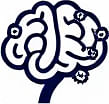Maslow's Hierarchy of Needs: Understanding Human Motivation
 by Max Miller
by Max Miller
Maslow's Hierarchy offers a framework for human needs, from basic survival to self-fulfillment. This model helps in psychology and personal growth by showing how needs build upon each other, influencing behavior and development in various aspects of life.

Maslow's Hierarchy stands as a foundational concept in psychology, outlining how human needs influence behavior and growth. This model, created by Abraham Maslow, presents needs in a structured order, starting from the most basic and moving to more advanced ones.
The Structure of Maslow's Hierarchy
The hierarchy is often shown as a pyramid, with each level representing a category of needs. At the base are the essential requirements for survival. physiological needs include food, water, and shelter—these form the foundation for all other needs.
Above this level come safety needs, which involve security and stability. People seek protection from harm and a stable environment once their basic survival is secure. This layer highlights how individuals prioritize protection in uncertain situations.
Moving upward, the hierarchy addresses social needs. These encompass belonging and relationships, emphasizing the human desire for connections with others. Love and friendship play key roles here, fostering emotional health.
The next stage focuses on esteem needs, where individuals pursue respect and achievement. This involves gaining recognition from peers and building self-confidence, driving personal accomplishments.
At the top sits self-actualization, the pinnacle of the hierarchy. This represents the fulfillment of one's potential and pursuit of personal growth. It encourages individuals to reach their highest capabilities through creativity and purpose.
Applications in Daily Life
In psychology, Maslow's Hierarchy provides insights into human behavior. Therapists use it to assess client progress, ensuring that lower needs are met before addressing higher ones. For example, a person struggling with esteem needs might first need to secure their safety.
Business strategies also draw from this model. Leaders apply it to motivate employees by addressing various needs in the workplace. Companies might offer competitive salaries to cover physiological needs, then provide job security for safety, and team-building activities for social connections.
In education, teachers can use the hierarchy to support student development. By recognizing that learners with unmet basic needs may struggle, educators can create environments that promote overall well-being. This approach leads to better engagement and success.
Cognitive development benefits greatly from this framework as well. Parents and mentors guide children by ensuring foundational needs are satisfied, allowing for exploration of higher-level aspirations. For instance, a child with stable safety can focus more on learning and creativity.
Real-World Examples
Consider how the hierarchy applies in challenging scenarios. During economic hardship, people might prioritize physiological needs like employment for food and housing over other goals. Once stability returns, they can shift focus to building relationships or pursuing passions.
In health contexts, medical professionals use the model to holistically treat patients. Addressing physical health first aligns with the hierarchy's base, paving the way for mental health improvements.
Athletes and performers often experience the hierarchy in their careers. They might secure financial stability before aiming for peak performance, which relates to self-actualization.
Critiques and Modern Adaptations
While influential, the hierarchy has faced critiques. Some argue it doesn't account for cultural differences, as needs might vary by society. For example, in collectivist cultures, social needs could precede individual safety.
Modern adaptations include extensions like self-transcendence, where individuals seek experiences beyond themselves, such as spiritual or altruistic pursuits. This evolution keeps the model relevant in contemporary discussions.
Practical Tips for Using Maslow's Hierarchy
To apply this in your own life, start by evaluating your current needs. Make a list of priorities based on the levels—ensure basics are covered before tackling higher goals. In professional settings, teams can assess group dynamics using the hierarchy to improve morale.
For lifelong learners, integrating this model means balancing personal development with foundational stability. It serves as a reminder that growth occurs in stages, encouraging patience and strategic planning.
Overall, Maslow's Hierarchy remains a vital tool for exploring human motivation. By recognizing the layers of needs, individuals and organizations can foster better outcomes in psychology, business, and cognitive growth.
